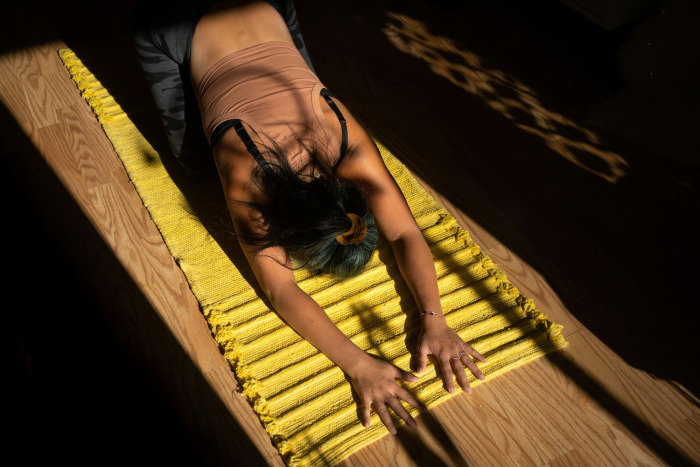
Explora Articles Work-life balance is not (just) about the hours we work
January 11, 2021 9 min
Work-life balance is not (just) about the hours we work
A recent study suggests that some of the work-life balance deficiencies we suffer may be due not so much to how much or when we work, as to a series of customs and social habits deeply rooted in our culture.


Work-life balance is a topic that occupies a prominent place on the social agenda of governments, and it is also a priority for many companies.
Spain’s government defines work-life balance as “a strategy that facilitates achieving effective equality between women and men through a new organization of the social and economic system where women and men can make the different facets of their lives compatible: employment, family, leisure, and personal time”.
In recent years we have seen significant progress in that direction. Today more workers enjoy flexible entry and exit times, leaves of absence for personal matters, reduced working hours, intensive days in summer, the possibility of working a few days from home.
In parallel, governments have promoted awareness-raising campaigns and regulatory changes, among which it is worth highlighting the extension of paternity leave and the so-called “á la carte work schedule” set in article 34 of Royal Decree-Law 6/2019:
“Workers have the right to request adaptations to the duration and distribution of their working day, including remote work, to make their right to work-life balance effective.”
Encouraging work-life balance was also one of the objectives of political group Más País-Equo when they recently requested 50 million euros to carry out a pilot test of a four-day working week. (They later opened to 32 hours working week over five days, after criticism from some feminist sectors that consider shorter days favour more balance).
In short, we observe many initiatives to foster work-life balance. Yet, it is as if work-life balance is mainly a question of how the time we devote to work interferes in other facets of our lives.
However, recent research by professors Ángel Alonso-Domínguez and Cecilia Díaz-Méndez (University of Oviedo), and Javier Callejo (UNED) suggests that certain customs and social habits deeply rooted in our culture outweigh our work schedules among the causes of the deficiencies in work-life balance we suffer in our country.
The authors analysed data they extracted from the latest iteration of the Time Use Survey (Encuesta de Empleo del Tiempo – EET) carried out by the National Institute of Statistics of Spain. Those data correspond to the period 2009-2010. However, the EET is a powerful statistical tool since it captures detailed information about the activities adults between 16 and 64 carry out throughout the day in periods of ten minutes, and it provides an excellent picture of when people work and how work interferes with other daily activities.
Taking advantage of these data, professors Alonso-Domínguez, Díaz-Méndez, and Callejo explored whether the type of working day (split or continuous) is a determining factor for work-life balance. More specifically, they analysed two typical areas of conflict: on the one hand, the relationship between the type of working day and housework or family care (balance between paid and unpaid work). On the other hand, the relationship between working time and workers’ eating schedules (work-mealtime balance).
A first discovery has to do with the differences between the working schedules of men and women. Although Spanish workers with a continuous shift are the majority, this is more frequent among women (64.6%) than among men (49.1%). However, this difference is mainly due to the high number of women who work part-time a continuous shift (18.7%). If we only consider full-time workers, then the differences between men (45.7%) and women (45.9%) who work on a continuous shift are tiny. But still, there is a significant difference between the percentage of men (49.9%) and women (31.3%) who work full time a split working day.
The data also reveal that the activity rate of Spanish workers reaches its maximum between 08:00 and 13:00. After this hour, the activity decreases, more intensely and later in the case of women. (Women stop working around 15:20 and men around 14:30). In the afternoon, there is a second peak of activity between 16:00 and 18:00, when more than a third of men, but only a quarter of women, are working. From that time on, the activity rate of men and women falls again, overlapping from 20:00, when most of them have already finished their working day.
Regarding housework and care tasks, that is, unpaid work, the Time Use Survey reveals that employed people engage in this type of activity mainly between 16:30 and 20:30, with a second peak of less intensity in the morning between 10:30 and 13:30. Therefore, we could conclude that a continuous working day favours work-life balance more than the split-day model, which obliges workers to postpone housework and care tasks until the moment they return home in the evening after finishing their working day. Following this argument, we could also conclude that by promoting the continuous working day (or part-time work) among men, we could increase their participation in domestic and care tasks to the same level as women.
Data show that men who work on a continuous shift do more housework than men with a split working day. They reveal that part-time jobs, almost exclusively female, facilitate that women assume more domestic responsibilities. But data also evidence that employed women, either with a continuous shift or with a split working day, do more housework and care tasks than men with the same type of working schedule. Moreover, women do more housework than men even before the start of their working day. And regardless of whether they work on a continuous shift (in which case they do housework before 08:00) or on a split working day (in which case they do it before 09:00).
In other words, women are at home for longer hours than men, and, during that time, they take on housework and care tasks. The problem is that they also get more involved in that kind of activity when their work schedule is similar to men’s. So, how can an equalisation of the work schedules of men and women be the solution to the disproportionate participation of women in housework and care tasks?
The authors argue that employed women spend more time on housework and care tasks not because they spend more hours at home than men, as some previous studies on the subject have affirmed. On the contrary, they suggest that the main reason for that difference lies in a series of gender stereotypes and customs, grounded in the local culture, that hinder progress in the co-responsibility between men and women, and reduce the effectiveness of the measures designed by companies and governments to promote work-life balance.
An example of how much culture and social customs influence work-life balance is how Spanish workers have managed to integrate the custom of a long lunch with other people in the different types of working days. Data show that both men and women make a significant effort to have lunch together at the same time. And whether they return home for lunch or do it in cafeterias or restaurants, most of them manage to follow the traditional pattern of a long, late lunch in the company of other people, ideally family members or friends.
Therefore, if the different models of working days do not prevent men and women from finding time throughout the day to enjoy, in many cases together, two main meals according to the traditional Spanish standard, does it make sense the idea that Spanish men do not take on larger participation in housework and care tasks because their working schedules make it difficult for them, or it will be rather that men are (consciously or unconsciously) less interested in finding time for these types of unpaid work than for a good meal (or for other personal matters)?
We found another argument in favour of this hypothesis in the differences between the time men and women devote to social and leisure activities in Spain. In general, men start their leisure activities earlier, and their level of commitment to these kinds of activities is higher throughout the day. An exception occurs during typical Spanish mealtimes, where the patterns of men and women are synchronized. In the hours after meals, women’s leisure activity exceeds that of men. Thereafter, however, men again take the lead, the gap widens, and patterns do not equalize until around 23:30 when leisure activities for both women and men cease.
Of course, there will be those who will say that these data are old, that many things have changed in our country in the last ten years, since the National Institute of Statistics produced its Time Use Survey.
I think that, at least, we should take them into consideration.
Reference
Alonso-Domínguez, Á., Callejo, J., & Díaz-Méndez, C. (2020). How the type of working day affects work – life balance and mealtime balance: A study based on the time use survey. Time & Society 29 (4): 1082-1103
Did you like it?
Future for Work Institute operates on an annual subscription model that includes access to our calendar activities and knowledge repository resources, as well as in-company services.
Plan
Curiosity
Recommended for HR teams of between 5 and 20 people.
Plan
Pioneer
Recommended for HR teams of between 15 and 100 people.
Plan
Exploration
Recommended for HR teams of more than 100 people.
Plan
Horizons
For more complex organizations.
Already Registered? Log in here







